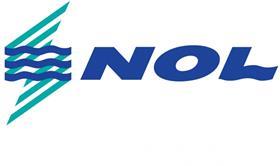
Singapore-based shipping giant NOL Group today (6 May) reported a 1Q 2016 net loss after tax of US$105m. 1Q 2016 Core EBIT (Earnings before Interest, Taxes and Non-Recurring Items) was a loss of US$84m. Core EBITDA (Earnings before Interest, Taxes, Depreciation and Amortisation) remained positive at US$18m in the first quarter of 2016.
“Worsening overcapacity of shipping tonnage in 2015 hit the industry well into first quarter 2016. Freight rates which declined across major trade lanes to historic low are expected to remain weak in the face of slower demand growth,” said NOL Group president and CEO Ng Yat Chung. “The difficult market condition is prompting consolidation and changes in alliances in the industry. While APL continues to make progress in taking out costs and improving yield, the proposed acquisition of APL by CMA CGM will help APL achieve scale to stay competitive in the industry.”
Against a backdrop of weak global demand and excess capacity in the industry, APL’s first quarter year-on-year volume fell 6 per cent due mainly to weak backhaul volume, while average freight rates fell 23 per cent during the same period. As a result, APL’s 1Q 2016 revenue contracted 29 per cent from the year before to US$1.14bn.
In this challenging environment, APL maintained prudent management of its deployed capacity, keeping its headhaul asset utilisation rate above 90 per cent. APL also stayed focused on its rigorous cost management and yield-focused trade strategy that emphasised network rationalisation and better cargo selection.
In the first quarter of 2016, APL achieved cost savings of US$60m. Coupled with savings through a lower bunker price, APL’s total cost of sales per forty-foot-equivalent unit (FEU) reduced by 16 per cent year-on-year.
Meanwhile, on 29 April 2016, CMA CGM announced that it received anti-trust regulatory clearance from the European Commission for its pre-conditional Voluntary General Offer (“VGO”) for NOL. The remaining pre-conditions relating to anti-trust regulatory clearances are expected to be satisfied by mid-2016.



